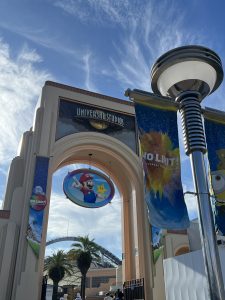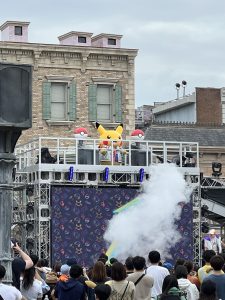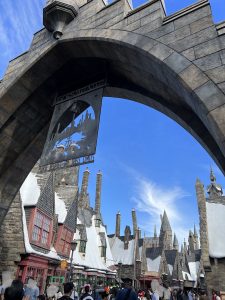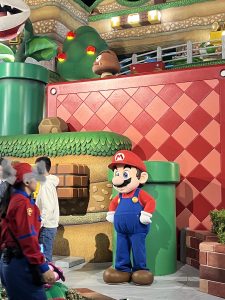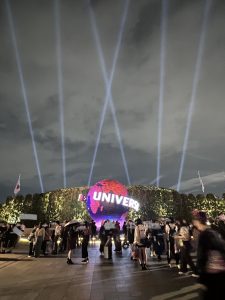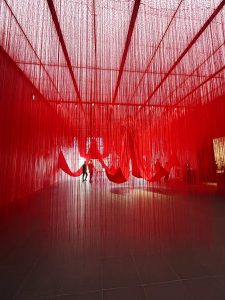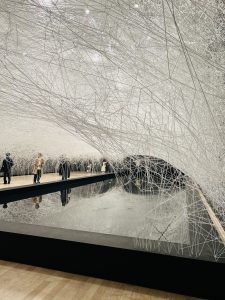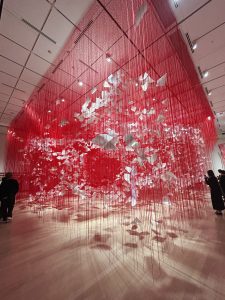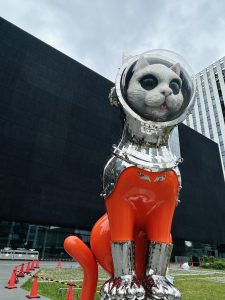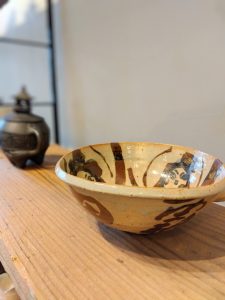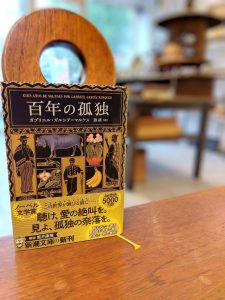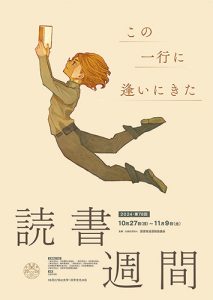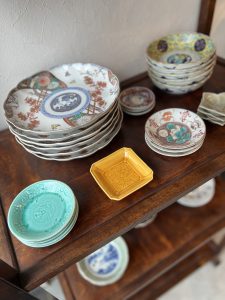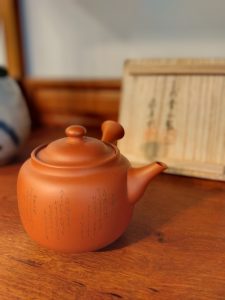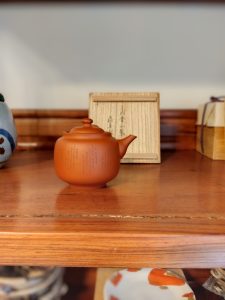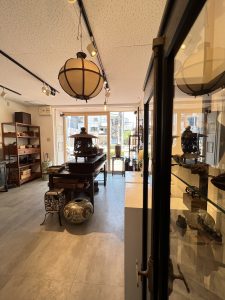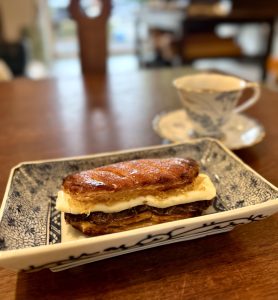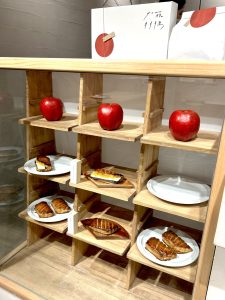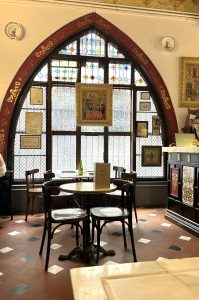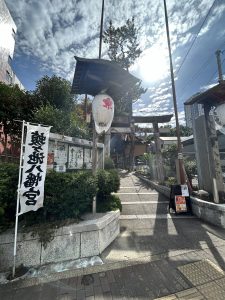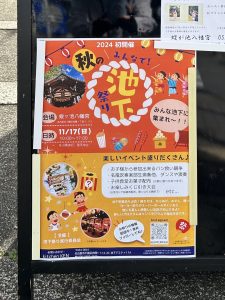「かわいい」には50年の歴史がありました(愛知県名古屋市千種区姫池通 骨董買取 古美術風光舎)
2024.11.01
皆さまこんにちは。スタッフTでございます。
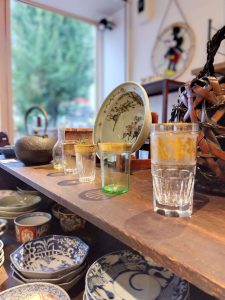
今日から11月になりました。
今日11月1日は、、国内だけでなく世界中で愛されている「ハローキティ」のお誕生日です。1974年に誕生し、2024年で50周年を迎えたそうです。50周年ということは、50歳ということで合っているのだろうか?と気になったのは私だけでしょうか。
「ハローキティ」といえば、アンパンマン、ドラえもんと並んで子どもから高齢者まで幅広く知られているキャラクターの一つ。わたしにとっては、物心ついた時から身近にある存在で、文房具はもちろん、ハンカチや巾着などたくさんのグッズを持っていましたが、今思えば、あれは私が欲しいと言ったのではなく、母が好きだったのではないだろうかという気もします。
そんなハローキティがどんなキャラクターなのかおさらいしてみますと、
名前 キティ・ホワイト
誕生日 11月1日
生まれた場所 イギリス・ロンドンの郊外
明るくてやさしい女のコ。身長はりんご5個分、体重はりんご3個分。趣味はクッキーづくりやピアノを弾くことで、ピアニストか詩人になることが夢。家族はパパとママと、双子の妹ミミィ。好きな食べものはママが作ったアップルパイ。
キティちゃん、日本生まれではないんですね(笑)そして双子の妹がいたのですね。ファンの方には怒られそうですが、キティグッズは持っていてもそんな詳細を知っているほどコアなファンでもなかったので、今回調べてみて、かなり細かいキャラ設定に驚きました。世界中で愛されるキャラクターなので、細かい設定も当たり前と言えば当たり前なのですが。
ハローキティが生まれたのは1974年。最初の商品が発売された時は、まだ名前がなかったといいます。ハローキティの最初の商品は、『プチパース』という小さなビニール製の小銭入れ。他のデザインもある中、キティちゃんのプチパースが飛び抜けて売れたことで、ルイス・キャロルの小説『不思議の国のアリス』の続編『鏡の国のアリス』に登場するネコの名前「キティ」に「ハロー」をつけてハローキティとなったのだそうです。
そんなみんなが大好きキティちゃんは、実はデビュー当時は「売れない子」だったのだそう。
現在ハローキティの3代目デザイナーをつとめる山口裕子さん(通称:ゆうこお姉さん)によると、デザイナーに就任した1980年は、キキララが大人気。キティちゃんは名前を知られていないくらい地味な存在だったようで、「誰?そのネコ」といった感じだったそうです。(まあ、ネコじゃないんですけど。)
「お洋服がかわいくない」
「おしゃれじゃない」
「リボンがワンパターン」
などなど、厳しい意見をもらって、どんどん修正していったそう。キティちゃんにそんな下積み時代があったとは驚きです。
今では様々なキャラクターやブランドとのコラボをしたり、いろいろなものに変身しているキティちゃんですが、
初めて変身したものは、実は『ハチ』。ミツバチです。ファン向けのサイン会を行っていたとき、女子高生から『キティちゃんはハチになったらかわいいと思う』と言われたことがきっかけだそう。
当時は「黄色は絶対売れない色」と言われていたそうですが、定期的に刊行していた『キティグッズコレクション』の表紙に掲載したら、すごい反響があり、「このキティの商品をつくって!」という手紙が、ドッサリ来たんだそうです。何がきっかけになるかわからないものですね。
ちなみに名古屋はエビフライだったり、手羽先だったりに変身しておりましたよ。
卒業したと思っていたキティですが、色々見ていて、またご当地キティを集めたくなっております。
ではでは、また。
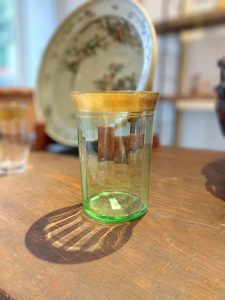
Hello everyone. This is Staff T.
Today is the first day of November. I was wondering if I am the only one who is wondering if the 50th anniversary means that Hello Kitty is 50 years old. Am I the only one who wondered if the 50th anniversary means that she is 50 years old?
Hello Kitty” is one of the widely known characters from children to the elderly, along with Anpanman and Doraemon. I have had many Hello Kitty items, including stationery, handkerchiefs, and drawstrings, but now that I think about it, it was my mother who liked Hello Kitty, not me.
Let me review what kind of character Hello Kitty is,
Name Kitty White
Date of birth November 1
Place of birth Suburb of London, England
A bright and gentle girl. She is 5 apples tall and weighs 3 apples. Her hobbies include baking cookies and playing the piano, and she dreams of becoming a pianist or a poet. Her family consists of her father, mother, and twin sister, Mimi. Her favorite food is apple pie made by her mom.
Kitty, you were not born in Japan (laughs) and you had a twin sister. I know this may offend some fans, but even though I have Kitty goods, I wasn’t a core fan enough to know such details, so I was surprised at the very detailed characterization when I looked into it this time. I was surprised at the detailed characterization of Hello Kitty, which is not surprising since the character is loved all over the world.
Hello Kitty was born in 1974. When the first product was released, it did not yet have a name. The first Hello Kitty product was a small vinyl coin purse called “Petit Purse. While other designs were available, Kitty’s Petit Purse sold so well that the name “Hello” was added to the name of the cat in “Alice in Mirrorland,” a sequel to Lewis Carroll’s novel “Alice in Wonderland,” to create Hello Kitty.
Everyone’s favorite Kitty was actually an “unsuccessful child” at the time of her debut.
According to Hiroko Yamaguchi (a.k.a. Yuko Yamaguchi, the third generation Hello Kitty designer), when she became the designer in 1980, KIRARARA was very popular. Kitty was so unassuming that her name was not well known, and people were like, “Who is that cat? She was so unremarkable that her name was unknown, and people just thought, “Who is that cat? (Well, she is not a cat.) “Her clothes are not cute,” she said.
Her clothes are not cute.
Her clothes are not fashionable.
The ribbon is a pattern.
The clothes are not cute,” ‘It’s not fashionable,’ ‘The ribbon is one pattern,’ etc., and they kept making corrections. It is surprising that Kitty had such a rough period in her life.
Today, Kitty has collaborated with various characters and brands, and has transformed herself into many different things,
The first thing she transformed into was actually a bee. A bee. It was during an autograph session for her fans when a high school girl said to her, “I think Kitty would be cute as a bee.
At the time, yellow was said to be a color that would never sell, but when I put it on the cover of my regular publication, “Kitty Goods Collection,” the response was so great that I received a flurry of letters asking me to “make this kitty product! I received a flood of letters asking me to “make this kitty product! You never know what will be the trigger.
By the way, Nagoya was transformed into fried shrimp and chicken wings. I thought I had graduated from this kitty, but now that I have seen so many different kitties, I feel the fever to collect local kitties.
See you soon.
*******************
ご実家の整理やお片付けなどをされている方のご相談などが多くございます。
お片付けなどくれぐれもご無理のないようになさってくださいませ。
風光舎では古美術品や骨董品の他にも絵画や宝石、趣味のお品など様々なジャンルのものを買受しております。
お片付けをされていて、こういうものでもいいのかしらと迷われているものでも、どうぞお気軽にご相談下さいませ。
また風光舎は、出張買取も強化しております。ご近所はもちろん、愛知県内、岐阜県、三重県その他の県へも出張いたします。
まずは、お電話お待ちしております。
愛知県名古屋市千種区姫池通
骨董 買取【古美術 風光舎 名古屋店】
TEL052(734)8444
10:00-17:00 OPEN
#出張買取#骨董#古美術#骨董品#絵画#版画#茶道具#刀剣#彫刻

